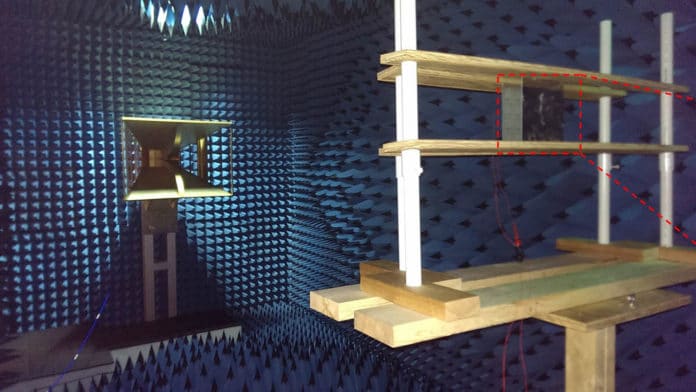Along with being signals, radio waves are also sources of energy. Scientists have been trying to capture energy from radio waves for years, but it is quite challenging to obtain enough energy to be useful.
Thanks to the development of metamaterials and the ever-growing number of ambient radiofrequency energy sources available, this case is changing. Metamaterials interact with light and radio waves using small, carefully designed structures.
Using metamaterials, a team of scientists led by Jiangfeng Zhou from the University of South Florida has developed an antenna that turns ambient radio waves into electric power. This metasurface-based antenna represents an essential step toward making it practical to harvest energy from radio waves.
This technology could provide wireless power to sensors, LEDs, and other simple devices with low energy requirements.
Research team leader Jiangfeng Zhou from the University of South Florida said, “By eliminating wired connections and batteries, these antennas could help reduce costs, improve reliability and make some electrical systems more efficient. This would be useful for powering smart home sensors such as those used for temperature, lighting and motion or sensors used to monitor the structure of buildings or bridges, where replacing a battery might be difficult or impossible.”
This newly developed metasurface-based antenna can harvest 100 microwatts of power from low-power radio waves. Thanks to the metamaterial used, it exhibited perfect absorption of radio waves and was designed to work with low intensities.
Clayton Fowler, the team member who fabricated the sample and performed the measurements, said, “Although more work is needed to miniaturize the antenna, our device crosses a key threshold of 100 microwatts of harvested power with high efficiency using ambient power levels found in the real world. The technology could also be adapted so that a radio wave source could be provided to power or charge devices around a room.”
The size of the antenna is 16 cm by 16 cm. During lab tests, scientists changed the power and frequency of a radio source between 0.7 and 2.0 GHz.
Zhou said, “We demonstrated the ability to harvest 100 microwatts of power from radio waves with an intensity of just 0.4 microwatts per centimeter squared, approximately the level of intensity of the radio waves 100 meters from a cell phone tower.”
“We also placed a cell phone very close to the antenna during a phone call, and it captured enough energy to power an LED during the call. Although it would be more practical to harvest energy from cell phone towers, this demonstrated the power capturing abilities of the antenna.”
Scientists are planning to make the antenna smaller with a version that could collect energy from multiple types of radio waves simultaneously to gather more energy.
Journal Reference:
- C. Fowler, S. Silva, G. Thapa, J. Zhou, “High-Efficiency Ambient RF Energy Harvesting by a Metamaterial Perfect Absorber,” Opt. Mater. Express Vol. 12, Issue 3, pp. 1242-1250 (2022) DOI: 10.1364/OME.449494
